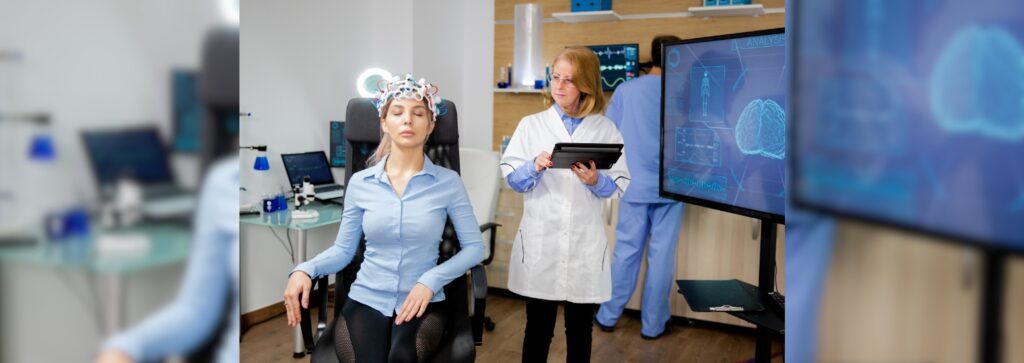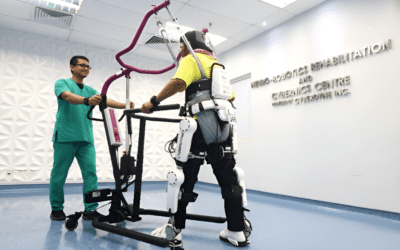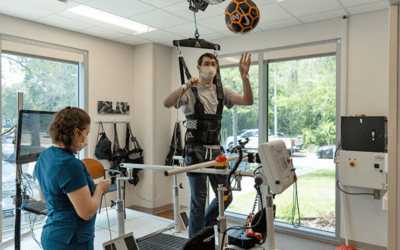Understanding Brain Tumors
A brain tumor is an abnormal growth of cells in or around the brain. These growths can be either benign (non-cancerous) or malignant (cancerous), and they can originate in the brain (primary tumors) or spread to the brain from other parts of the body (secondary or metastatic tumors). Understanding brain tumors requires examining their types, symptoms, causes, and treatments.
Symptoms of Brain Tumors:
The symptoms of a brain tumor vary depending on its size, location, and rate of growth. Common symptoms include:
- Headaches (often worse in the morning or with coughing/sneezing)
- Seizures
- Nausea or vomiting
- Changes in vision or hearing
- Difficulty with speech, balance, or coordination
- Memory or cognitive problems
- Personality changes
- Weakness or numbness in parts of the body
Causes and Risk Factors:
The exact cause of most brain tumors is unknown, but several factors may increase the risk:
- Genetic Mutations: Some brain tumors are linked to inherited genetic conditions such as neurofibromatosis or Li-Fraumeni syndrome.
- Radiation Exposure: Exposure to ionizing radiation, such as radiation therapy for other cancers, can increase the risk of developing a brain tumor.
- Age: While brain tumors can occur at any age, the risk increases with age, especially for certain types like gliomas.
- Family History: A small percentage of brain tumors may have a hereditary component.
Diagnosis of Brain Tumors:
To diagnose a brain tumor, doctors often use the following methods:
- Neurological Exams: Tests to assess brain function, including balance, coordination, and reflexes.
- Imaging Tests: MRI (Magnetic Resonance Imaging) and CT (Computed Tomography) scans are commonly used to visualize brain tumors.
- Biopsy: A tumor tissue sample may be taken for analysis to determine whether it is benign or malignant.
The Impact of Brain Tumors on Patients:
The impact of brain tumors on patients is profound, affecting not only physical health but also emotional, cognitive, and social well-being. These effects can vary greatly depending on the size, location, type, aggressiveness of the tumor, the patient’s overall health, and the treatment received.
Below are key areas where brain tumors impact patients:
1. Physical Impact:
- Neurological Deficits: Depending on the tumor’s location, patients may experience various neurological symptoms. Tumors affecting the motor cortex can cause weakness or paralysis in certain body parts, while those in the cerebellum might affect coordination and balance.
- Seizures: Many brain tumor patients experience seizures, which can range from mild to severe and can significantly disrupt daily life.
- Fatigue: Both the tumor and the treatments (surgery, radiation, chemotherapy) can cause extreme physical fatigue, making daily tasks challenging.
- Headaches and Pain: Chronic headaches, often worse in the morning or when changing posture, are common and can significantly reduce quality of life.
- Vision and Hearing Problems: Tumors affecting areas near the eyes or ears can cause blurred vision, double vision, or partial hearing loss.
2. Cognitive Impact:
- Memory Loss: Brain tumors and treatments can impair short-term memory, making it difficult to recall recent events.
- Concentration Issues: Many patients find it hard to focus on tasks, leading to reduced productivity and frustration, especially in work or school settings.
- Executive Functioning: Tumors in the frontal lobe may disrupt decision-making and problem-solving abilities.
- Language Difficulties: Tumors in areas responsible for speech can lead to difficulties with finding words (aphasia), writing, or understanding spoken or written language.
3. Emotional and Psychological Impact:
- Anxiety and Depression: A brain tumor diagnosis often brings anxiety and depression. Uncertainty about the future, fear of recurrence, and the stress of treatment can contribute to these feelings.
- Personality Changes: Tumors in certain parts of the brain, particularly the frontal lobe, can cause personality shifts, leading to mood swings, irritability, or impulsive behaviors that were not present before.
- Emotional Fatigue: The prolonged stress of living with a brain tumor, the side effects of treatment, and changes in daily life can lead to emotional exhaustion.
4. Social Impact:
- Isolation: The physical and cognitive effects of brain tumors, such as mobility issues or memory loss, can lead to social withdrawal. Patients may feel isolated from friends and family due to a lack of understanding or difficulties in participating in social activities.
- Strain on Relationships: Changes in personality, mood, or cognitive function can place stress on relationships, particularly with close family members or caregivers.
5. Impact on Daily Functioning:
- Loss of Independence: Depending on the tumor’s severity, patients may lose the ability to perform basic activities of daily living (ADLs) such as dressing, bathing, or cooking. This loss of independence can be emotionally challenging.
- Mobility and Coordination Issues: Tumors affecting the cerebellum or motor areas can result in mobility impairments, making it difficult to walk or move without assistance.
- Speech and Communication: Speech difficulties or aphasia can make it hard to communicate effectively, which can be frustrating for both patients and their caregivers.
6. Long-Term and Post-Treatment Impact:
- Cognitive Rehabilitation: Patients may need long-term cognitive therapy to recover or improve memory, attention, and problem-solving skills.
- Chronic Health Conditions: Even after successful treatment, many patients experience chronic health issues due to the tumor or side effects of treatment, including cognitive deficits, fatigue, and neurological problems.
- Fear of Recurrence: Even if a brain tumor is successfully treated, patients may live with the fear of recurrence, which can impact their mental health and sense of well-being.

Treatment of Brain Tumors:
Treatment options depend on the type, size, location, and grade of the tumor. Common treatments include:
- Surgery: The first line of treatment for many brain tumors, aiming to remove as much of the tumor as safely possible.
- Radiation Therapy: Used to destroy cancerous cells or shrink the tumor, especially when surgery is not an option.
- Chemotherapy: Involves the use of drugs to kill or slow the growth of cancer cells. Chemotherapy may be administered orally or through an IV.
- Targeted Therapy: Focuses on specific genetic mutations or pathways involved in tumor growth.
- Immunotherapy: Enhances the body’s immune system to fight the tumor.
- Steroids: Used to reduce swelling and inflammation around the tumor.
- Palliative Care: Focuses on improving the quality of life by managing symptoms.
Managing side effects of treatment:
Managing the side effects of brain tumor treatment is essential for improving the patient’s quality of life and ensuring successful recovery. Treatments such as surgery, radiation, and chemotherapy can cause a range of physical, cognitive, and emotional side effects. Below are common side effects of brain tumor treatment and strategies for managing them:
1. Fatigue
Fatigue is one of the most common side effects, often caused by the tumor itself, surgery, radiation therapy, or chemotherapy.
Management Strategies:
- Rest and Sleep: Prioritize sleep and take frequent naps during the day if needed.
- Exercise: Light physical activity, such as walking or yoga, can help boost energy levels.
- Nutrition: Eating a balanced diet with plenty of fluids, proteins, and carbohydrates can support energy levels.
- Energy Conservation: Plan tasks for the times of day when energy is higher and delegate strenuous tasks to others when possible.
2. Nausea and Vomiting
These are common side effects of chemotherapy and sometimes radiation therapy.
Management Strategies:
- Antiemetic Medications: Doctors can prescribe medications like ondansetron or metoclopramide to prevent or control nausea.
- Smaller, Frequent Meals: Eating smaller portions more frequently can reduce nausea.
- Hydration: Staying hydrated with small sips of water, clear broth, or herbal teas can help ease nausea.
- Ginger: Ginger in tea or as a supplement may help alleviate nausea naturally.
3. Cognitive Changes
Brain tumors and their treatments can affect cognitive functions like memory, attention, and problem-solving.
Management Strategies:
- Cognitive Rehabilitation Therapy: This therapy helps patients improve memory, attention, and executive function through exercises and strategies.
- Routine and Structure: Keeping a daily routine and using reminders (e.g., calendars, phone alerts) can help compensate for memory difficulties.
- Brain Exercises: Activities like puzzles, reading, or brain-training apps can stimulate cognitive function.
- Consultation with a Neuropsychologist: They can help assess and treat cognitive impairments.
4. Seizures
Brain tumors can cause seizures, and surgery or other treatments may increase the risk of having them.
Management Strategies:
- Antiepileptic Medications: Medications like levetiracetam or valproate can help prevent seizures.
- Avoid Triggers: Identifying and avoiding potential seizure triggers, such as stress, lack of sleep, or certain foods, can help.
- Safety Precautions: Patients with a risk of seizures should avoid activities that could cause harm if a seizure occurs, like swimming alone or climbing heights.
5. Headaches
Headaches are common due to the tumor, surgery, or radiation therapy, and they can be severe.
Management Strategies:
- Pain Relievers: Over-the-counter medications such as acetaminophen or prescribed pain relievers can be effective.
- Steroids: In cases of swelling in the brain, corticosteroids like dexamethasone may be prescribed to reduce inflammation and pain.
- Relaxation Techniques: Stress-relieving techniques such as meditation, deep breathing, or gentle massage can help alleviate tension-related headaches.
6. Hair Loss
Hair loss (alopecia) often occurs after radiation or chemotherapy targeting the brain.
Management Strategies:
- Scalp Cooling: During chemotherapy, cooling caps may reduce hair loss by reducing blood flow to hair follicles.
- Wigs and Head Coverings: Patients can use wigs, hats, or scarves to cope with hair loss.
- Emotional Support: Hair loss can be emotionally distressing, so seeking support from counselors or support groups may help.
7. Skin Changes
Radiation therapy can lead to skin irritation, redness, or sensitivity in the treated area.
Management Strategies:
- Gentle Skin Care: Use mild, fragrance-free cleansers and moisturizers on the affected area.
- Avoid Sun Exposure: Protect the skin from direct sun exposure, and wear broad-brimmed hats or sunscreen when outdoors.
- Topical Treatments: Doctors may recommend specific creams or ointments to soothe irritated skin.
8. Emotional and Psychological Effects
Feelings of anxiety, depression, and mood swings can be side effects of both the tumor and its treatment.
Management Strategies:
- Counseling and Support Groups: Talking to a counselor or joining a support group can help patients express their feelings and receive support.
- Mindfulness and Relaxation: Practices such as meditation, deep breathing, and progressive muscle relaxation can help reduce anxiety.
- Antidepressants or Anti-Anxiety Medications: If needed, a doctor may prescribe medications to help manage anxiety or depression.
9. Speech and Language Difficulties
Tumors or treatment affecting the areas responsible for speech and language can lead to difficulties with speaking, reading, and understanding.
Management Strategies:
- Speech Therapy: A speech-language pathologist can help patients improve communication skills and address speech and language deficits.
- Communication Aids: Tools like writing boards or apps can help patients communicate more easily if speech is impaired.
11. Mobility and Coordination Issues
Damage to certain parts of the brain or side effects from surgery or treatment can lead to weakness, balance issues, or coordination problems.
Management Strategies:
- Physical Therapy: Rehabilitation exercises and therapies can help improve strength, coordination, and mobility.
- Assistive Devices: Canes, walkers, or braces can aid in maintaining mobility and independence.
- Home Modifications: Making adjustments at home, such as installing handrails or removing tripping hazards, can help prevent falls.
12. Hormonal Imbalances
Brain tumors near the pituitary gland or hypothalamus, or their treatment, may lead to hormonal imbalances affecting metabolism, mood, and energy levels.
Management Strategies for Brain Tumor:
- Hormone Replacement Therapy: If the pituitary gland is affected, hormone replacement therapy may be necessary to restore balance.
- Regular Blood Tests: Monitoring hormone levels regularly helps detect imbalances early and allows for timely adjustments in treatment.

Advances in brain tumor treatment:
Advances in brain tumor treatment have been significant in recent years, focusing on improving survival rates, reducing side effects, and enhancing the quality of life for patients. Some key developments include:
1. Personalized Medicine and Genomics
- Molecular Profiling: Understanding tumor genetics has led to personalized therapies targeting specific mutations. For example, IDH1/IDH2 mutations in gliomas can be targeted with drugs like ivosidenib.
- Liquid Biopsy: Blood tests that detect tumor-derived DNA (circulating tumor DNA) are emerging as non-invasive tools to monitor tumor response and recurrence.
2. Immunotherapy
- Checkpoint Inhibitors: Drugs like nivolumab and pembrolizumab have been used in clinical trials to enhance the immune system’s ability to recognize and attack tumor cells.
- CAR-T Cell Therapy: Chimeric antigen receptor (CAR) T-cell therapy is being explored to target specific antigens on brain tumor cells.
- Vaccines: Experimental vaccines like DCVax-L, which uses the patient’s immune cells to attack the tumor, are promising in early trials.
3. Advanced Imaging and Surgical Techniques
- Intraoperative MRI: Real-time MRI during surgery helps surgeons achieve more precise removal of tumors, minimizing damage to surrounding healthy tissue.
- Fluorescence-Guided Surgery: Using a fluorescent dye like 5-ALA, surgeons can visualize tumor boundaries more clearly during surgery.
- Laser Interstitial Thermal Therapy (LITT): This minimally invasive technique uses a laser to destroy tumors with heat, offering an option for patients with inoperable tumors.
4. Targeted Therapies
- Tyrosine Kinase Inhibitors: Drugs like Teverelix and Erlotinib target specific growth factor receptors in tumor proliferation, especially in glioblastomas.
- Oncolytic Viruses: Viruses engineered to infect and destroy tumor cells are being studied. DNX-2401, an oncolytic adenovirus, has shown potential in glioma trials.
5. Radiotherapy Innovations
- Proton Beam Therapy: This highly precise form of radiotherapy delivers less radiation to surrounding tissues, reducing side effects, and is particularly useful for pediatric brain tumors.
- Stereotactic Radiosurgery (SRS): Techniques like Gamma Knife or CyberKnife offer highly focused radiation, targeting only the tumor with minimal impact on nearby brain structures.
- Tumor Treating Fields (TTF): A non-invasive treatment using alternating electric fields to disrupt cancer cell division, such as Optune, has been shown to improve outcomes for glioblastoma patients.
6. Gene Therapy and CRISPR
- Experimental gene therapies aim to deliver therapeutic genes into tumor cells, either to replace faulty genes or to trigger cell death.
- CRISPR-Cas9 technology holds potential for editing tumor-driving mutations, although this is still in the early stages for brain tumors.
7. Nanotechnology
- Nanoparticle Drug Delivery: Nanoparticles are being used to deliver chemotherapy and other therapies directly to the tumor site, crossing the blood-brain barrier more effectively than traditional methods.
These advances, while promising, are still under active investigation in clinical trials. Each development brings hope for more effective and less harmful treatments for brain tumor patients.
Conclusion:
Managing the side effects of brain cancer treatment requires a comprehensive approach that addresses both physical and emotional well-being. By working closely with healthcare providers, patients can implement strategies to reduce the severity of side effects and improve patient experience and quality of life during and after treatment understanding Brain Tumors
A brain tumor is an abnormal growth of cells in or around the brain. These growths can be either benign (non-cancerous) or malignant (cancerous), and they can originate in the brain (primary tumors) or spread to the brain from other parts of the body (secondary or metastatic tumors). Understanding brain tumors requires examining their types, symptoms, causes, and treatments.



